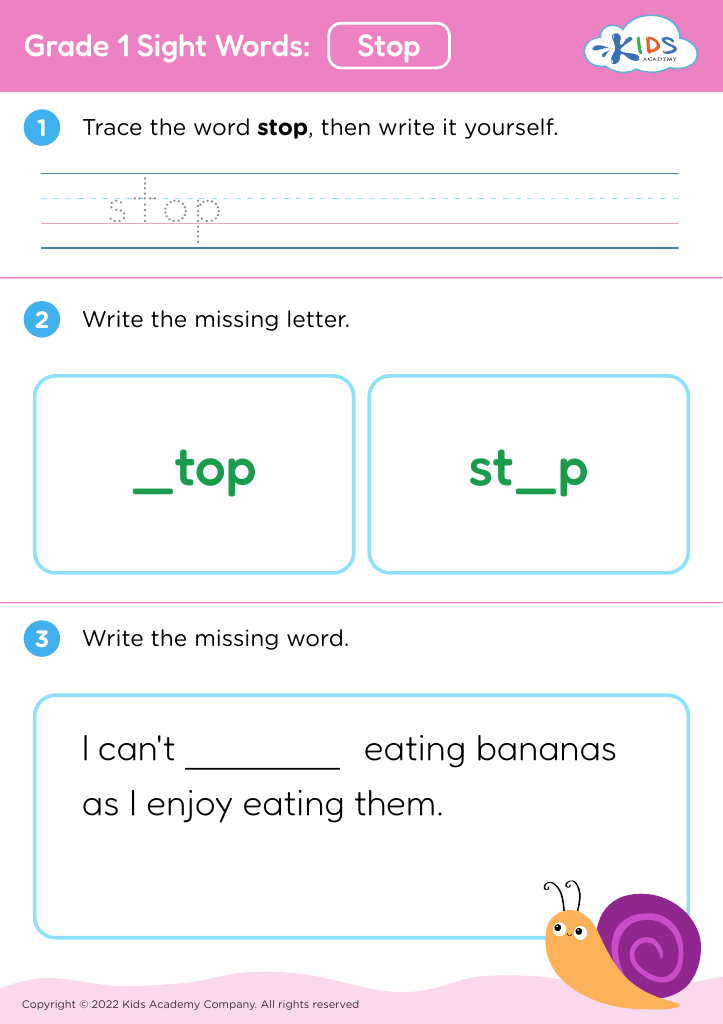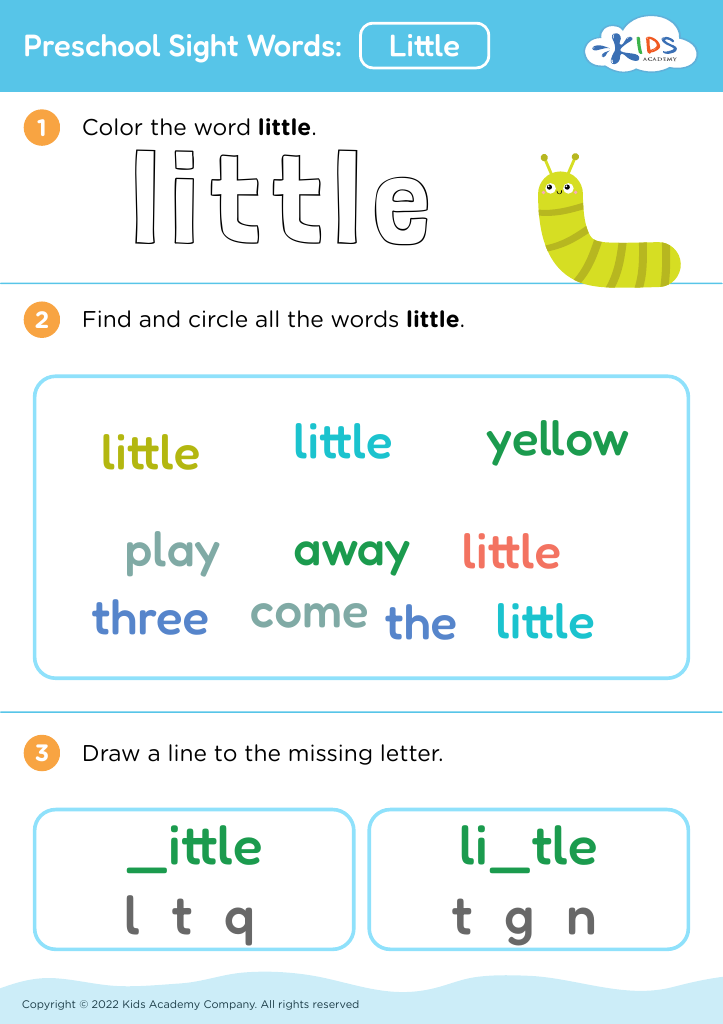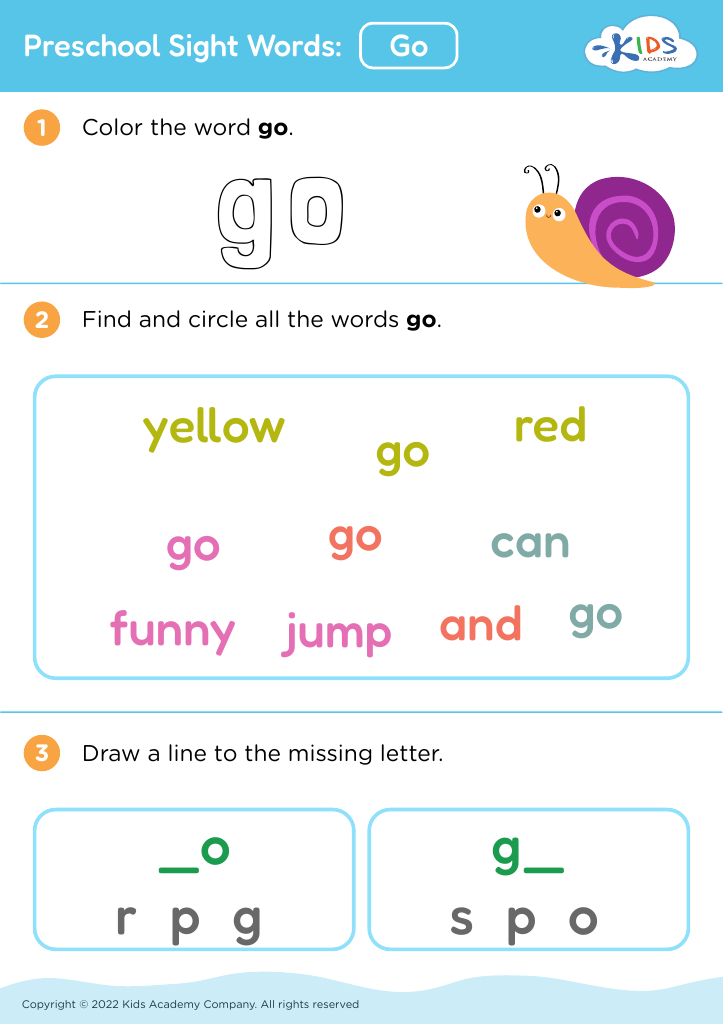Understanding patterns Sight Words Worksheets for Ages 5-6
6 filtered results
-
From - To
Unlock your child's reading potential with our "Understanding Patterns Sight Words Worksheets" tailored for ages 5-6. Designed to enhance early literacy skills, these worksheets engage young learners in recognizing and understanding sight word patterns through fun, interactive activities. Each worksheet encourages children to identify, read, and practice key sight words within various contexts, reinforcing comprehension and retention. By promoting pattern recognition, these resources build a strong foundation for reading success. Ideal for both home and classroom use, our worksheets make learning enjoyable, fostering a love for reading that will last a lifetime. Start your child’s reading journey today!
Understanding patterns and sight words is crucial for children ages 5-6 as they lay the foundation for literacy and overall learning. At this developmental stage, children are naturally curious and eager to explore language. Recognizing sight words—high-frequency words commonly seen in everyday texts—enables them to read more fluently. When children quickly identify these words, they can focus more on comprehension and interpretation rather than spending time decoding every single term.
Moreover, understanding patterns in language—such as rhymes, syllables, and word structures—helps children make connections between sounds and meanings, enhancing their phonemic awareness. This skill is essential for spelling and writing, as recognizing patterns allows children to predict and learn new words.
For parents and teachers, fostering these skills is essential in nurturing a child's confidence in reading and learning. Engaging in activities that promote sight word recognition and pattern understanding can significantly affect a child's academic journey, contributing to a lifelong love for reading. By supporting these early literacy skills, adults empower children to be successful learners, helping them overcome potential literacy challenges in the future. Ultimately, caring about this aspect of early education enriches a child's cognitive development and provides them with essential tools for effective communication.























